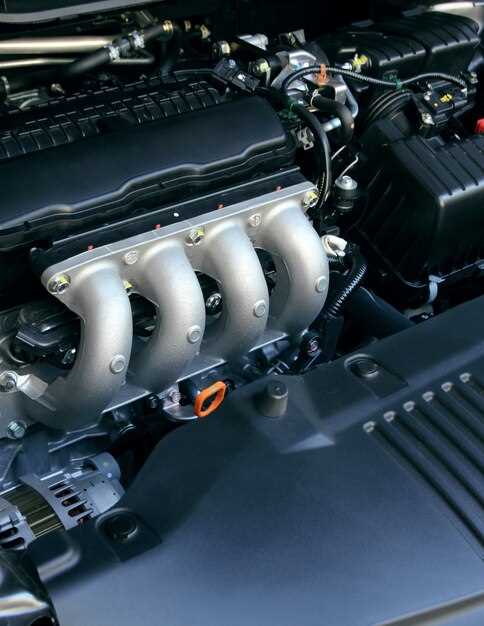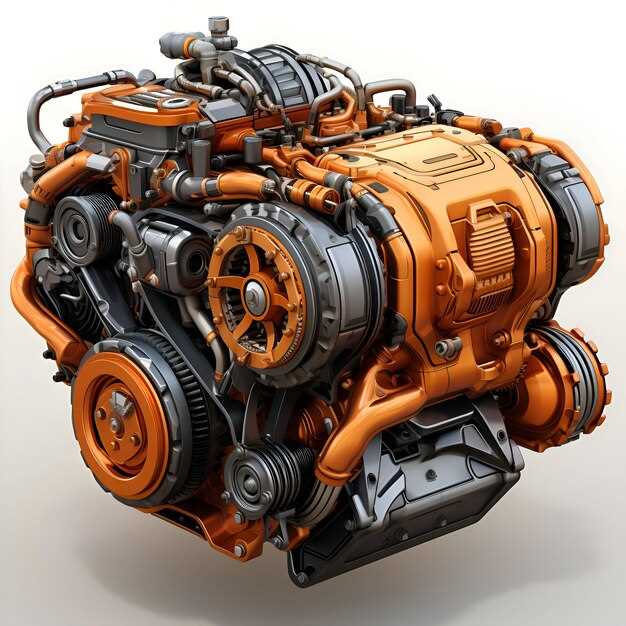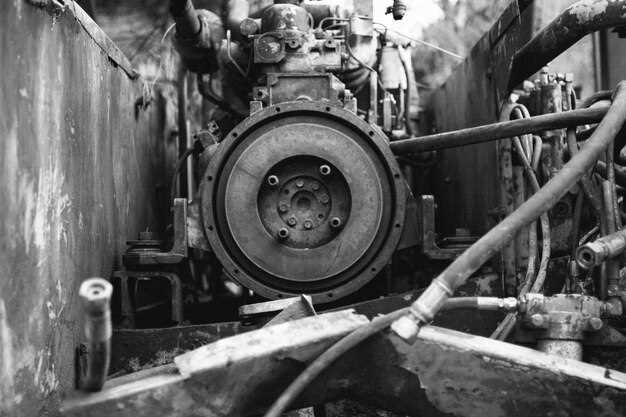
The HEMI engine, a marvel of automotive engineering, has established itself as a symbol of unmatched performance and raw power. Originating in the mid-20th century, this unique engine design has captivated the hearts of enthusiasts and racers alike. Its signature hemispherical combustion chamber design not only contributes to its distinctive name but also significantly enhances efficiency and power output, setting it apart from traditional engines.
One of the key elements that define the HEMI is its ability to deliver exceptional performance across a range of applications, from the streets to the racetracks. Drivers seek out HEMI-powered vehicles for their impressive torque and horsepower, often resulting in exhilarating acceleration that leaves a lasting impression. This legendary engine has powered some of the most iconic vehicles, solidifying its status in automotive history.
As we explore the fascinating journey of the HEMI engine, we will delve into its engineering innovations, its influence on American muscle cars, and the passionate following it has garnered over the decades. The story of the HEMI is not just one of power; it is a testament to the spirit of innovation and excellence that defines the automotive industry.
History of the HEMI Design and Its Origins
The HEMI engine design has become synonymous with power and performance, carving out a remarkable legacy in the automotive world. Its roots can be traced back to the early 1950s when Chrysler engineers sought to innovate beyond the conventional flathead engine designs prevalent at the time.
The original HEMI engine debuted in 1951, featuring a hemispherical combustion chamber that allowed for more efficient airflow and improved power output. This unique design, with its rounded cylinder heads, facilitated better fuel combustion, enabling high performance while maintaining engine reliability.
By the mid-1950s, the HEMI gained notoriety on the racetrack, as its formidable horsepower was unmatched by competitors. The engine’s dominance peaked during the 1960s when it powered legends like the Dodge Charger and Plymouth Barracuda, effectively solidifying its position in American muscle car culture.
Over the years, the HEMI design has undergone several iterations, including the introduction of the 426 HEMI in 1964, which became a racing icon. Its combination of high compression ratios and a robust design set new benchmarks in performance, helping to define the muscle car era.
Despite changes in automotive technology and design philosophy, the HEMI’s core principles remain relevant. The resurgence of the HEMI in the 21st century, particularly in the Dodge lineup, demonstrates its enduring appeal and the impact of its legacy on modern performance vehicles.
Key Features that Define HEMI Engines

The HEMI engine, a true icon in the automotive world, is distinguished by several key features that underscore its legacy and engineering ingenuity. At the heart of its design is the unique hemispherical combustion chamber, which allows for a more efficient air-fuel mixture and promotes better combustion. This shape enables the use of larger valves, which enhances airflow and ultimately translates to increased power output.
Another defining aspect of HEMI engines is their ability to produce substantial torque at a wide range of RPMs. This characteristic makes them particularly appealing for performance enthusiasts and those seeking robust towing capabilities. The torquey nature of HEMI engines contributes to their reputation for delivering strong acceleration and responsiveness.
The use of advanced materials and engineering techniques in HEMI engine construction also sets them apart. Technologies such as variable valve timing and multi-displacement systems further enhance efficiency and performance. These innovations allow HEMI engines to adapt to various driving conditions, optimizing fuel economy without sacrificing power.
Additionally, the distinctive deep growl of a HEMI engine adds to its allure. This auditory experience has become synonymous with American muscle cars, cementing the HEMI’s status as a cultural icon. The sound alone evokes feelings of excitement and nostalgia for car enthusiasts and casual drivers alike.
In summary, the combination of a hemispherical combustion chamber, impressive torque, advanced engineering, and a signature sound defines the HEMI engine. These features not only highlight the legacy of the HEMI but also ensure its continued relevance in the modern automotive landscape.
Comparing HEMI Performance with Other Engine Types
The HEMI engine, with its unique hemispherical combustion chamber design, has carved out a notable legacy in the automotive world. Its performance characteristics set it apart from other engine types, notably inline and flat engines. The distinctive shape of the HEMI head allows for larger valves and improved airflow, which translates into higher power output and efficiency.
In contrast, inline engines, while often more compact and efficient in terms of fuel economy, typically do not deliver the same level of raw power. Their design limits the size and number of valves, which can hinder performance at higher RPMs. Additionally, inline engines tend to have a higher center of gravity, leading to potential handling issues in sports cars.
Flat engines, or boxers, offer a low center of gravity and smooth power delivery. However, their complexity and weight can detract from performance in high-speed applications. While HEMI engines generate significant torque and horsepower, making them ideal for performance cars and trucks, flat engines may not achieve the same output levels, particularly in straight-line acceleration.
Overall, the HEMI’s combination of power, efficiency, and distinctive sound contributes to its storied legacy. When comparing performance metrics, the HEMI engine stands out for its ability to generate substantial horsepower, making it a popular choice for enthusiasts and manufacturers alike.
The Role of HEMI Engines in Motorsports

HEMI engines have carved a significant niche in the world of motorsports, renowned for their remarkable performance capabilities. Their unique design, featuring a hemispherical combustion chamber, allows for greater airflow and efficient fuel burning, leading to enhanced power output.
Several factors contribute to the success of HEMI engines in competitive racing:
- Power Output: The HEMI design optimizes the combustion process, resulting in higher horsepower and torque. This is crucial for competitive racing, where every bit of power can make a difference.
- Heat Resistance: HEMI engines are built to withstand high temperatures, which is essential during extended races. Their ability to maintain performance under stress is a significant advantage.
- Tuning Potential: The architecture of HEMI engines allows for extensive modifications and tuning. Racers can enhance various components, such as camshafts and exhaust systems, to maximize performance specific to race conditions.
- Reliability: Over decades, HEMI engines have proven to be reliable under extreme conditions, making them a favored choice for many professional teams.
These engines have been pivotal in various racing disciplines, from drag racing to stock car racing. The iconic Dodge Charger and Plymouth Superbird are notable examples of vehicles powered by HEMI engines in high-stakes environments.
Furthermore, the legacy of HEMI in motorsports continues to evolve as advancements in technology enhance performance. The ongoing dedication to innovation ensures that HEMI remains a formidable force on the track.
In summary, HEMI engines play a crucial role in motorsports, combining performance, reliability, and tuning capabilities to create champions on the racetrack.
Maintenance and Care for HEMI Engines
Proper maintenance is crucial for preserving the performance and longevity of HEMI engines, known for their power and legacy. Regular oil changes are essential; utilizing high-quality synthetic oil can enhance engine efficiency and protect critical components from wear. It is advisable to replace the oil filter simultaneously to prevent any contaminants from circulating.
Checking and maintaining proper coolant levels helps prevent overheating. HEMI engines typically operate at higher temperatures due to their performance capabilities, so ensuring a clean and effective cooling system is vital. Flushing the cooling system periodically can remove buildup and enhance thermal efficiency.
Air filters should be inspected and replaced as necessary. A clean air filter allows for optimal air intake, maintaining the engine’s performance and efficiency. In addition, spark plugs should be checked regularly since they play a significant role in ignition and overall engine function.
Fuel quality is another important aspect; using high-octane fuel can improve performance, especially in high-performance applications. Regularly monitoring fuel injectors for cleanliness ensures that the engine receives the proper fuel mixture, contributing to its power output.
The ignition system should be maintained by checking the ignition coils and wires for wear or damage. Regular inspections will help identify issues before they lead to significant problems, ensuring consistent performance. It’s equally important to follow the manufacturer’s recommended maintenance schedule, which provides guidelines for timing belt or chain replacements and other critical service intervals.
Finally, take care of your HEMI engine by storing the vehicle properly and using it within its designed limits. Environmental factors, such as moisture and temperature fluctuations, can affect engine components, so keeping the vehicle in a garage or sheltered area can prolong its life. By following these maintenance practices, enthusiasts can uphold the performance legacy of the HEMI engine, ensuring it continues to deliver power for years to come.
The Future of HEMI Technology in Automotive Engineering
The HEMI engine has long been synonymous with raw power and high-performance in the automotive industry. As technology evolves, the future of HEMI engines will likely embrace innovative engineering solutions that enhance both performance and efficiency. One of the key directions for HEMI technology is the integration of hybrid powertrains. By combining the traditional internal combustion capabilities of HEMI engines with electric motors, manufacturers can achieve remarkable performance while simultaneously reducing emissions.
Advanced Materials will play a significant role in the next generation of HEMI engines. Utilizing lightweight composites and advanced alloys will help reduce the overall weight of the engine, further enhancing performance without compromising durability. This shift towards lighter materials also aligns with global trends focused on improved fuel economy and sustainability in automotive engineering.
Moreover, smart technology will revolutionize how HEMI engines operate. The incorporation of artificial intelligence and machine learning can optimize engine performance in real-time, adapting to driving conditions and driver habits. Such advancements could lead to more efficient fuel consumption while maintaining the thrilling power that HEMI engines are known for.
In addition, the future of HEMI technology could also see increased emphasis on clean combustion techniques. Efforts to optimize air-fuel mixtures and combustion processes will ensure that HEMI engines not only deliver performance but do so in an environmentally responsible manner. This could involve innovations such as direct injection and advanced turbocharging systems, capable of enhancing power output without sacrificing efficiency.
In conclusion, the HEMI engine is poised for an exciting future within automotive engineering. By embracing hybrid technology, advanced materials, smart systems, and clean combustion techniques, HEMI engines can continue to thrill enthusiasts while adapting to the demands of a more sustainable and performance-driven automotive landscape.



